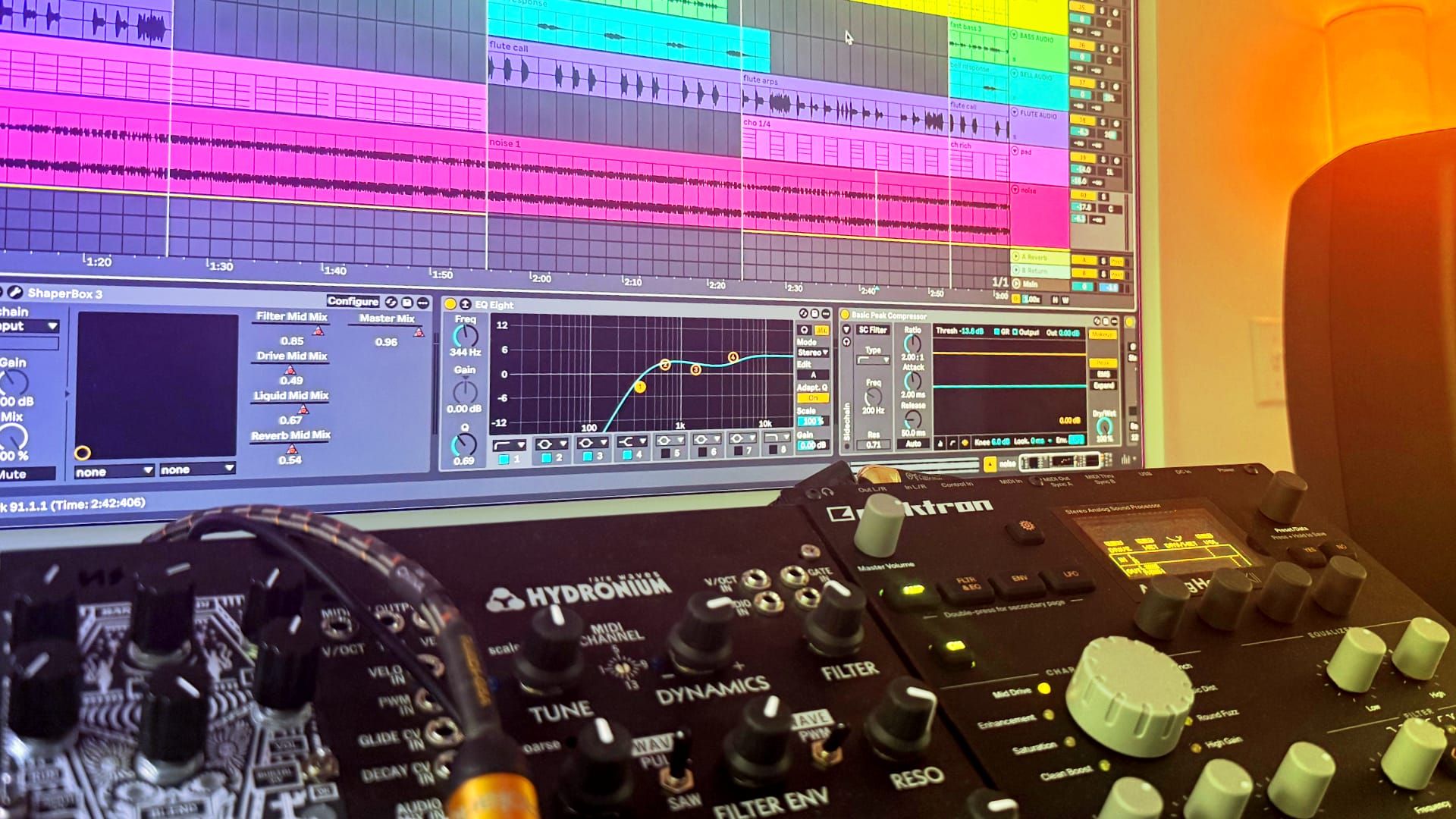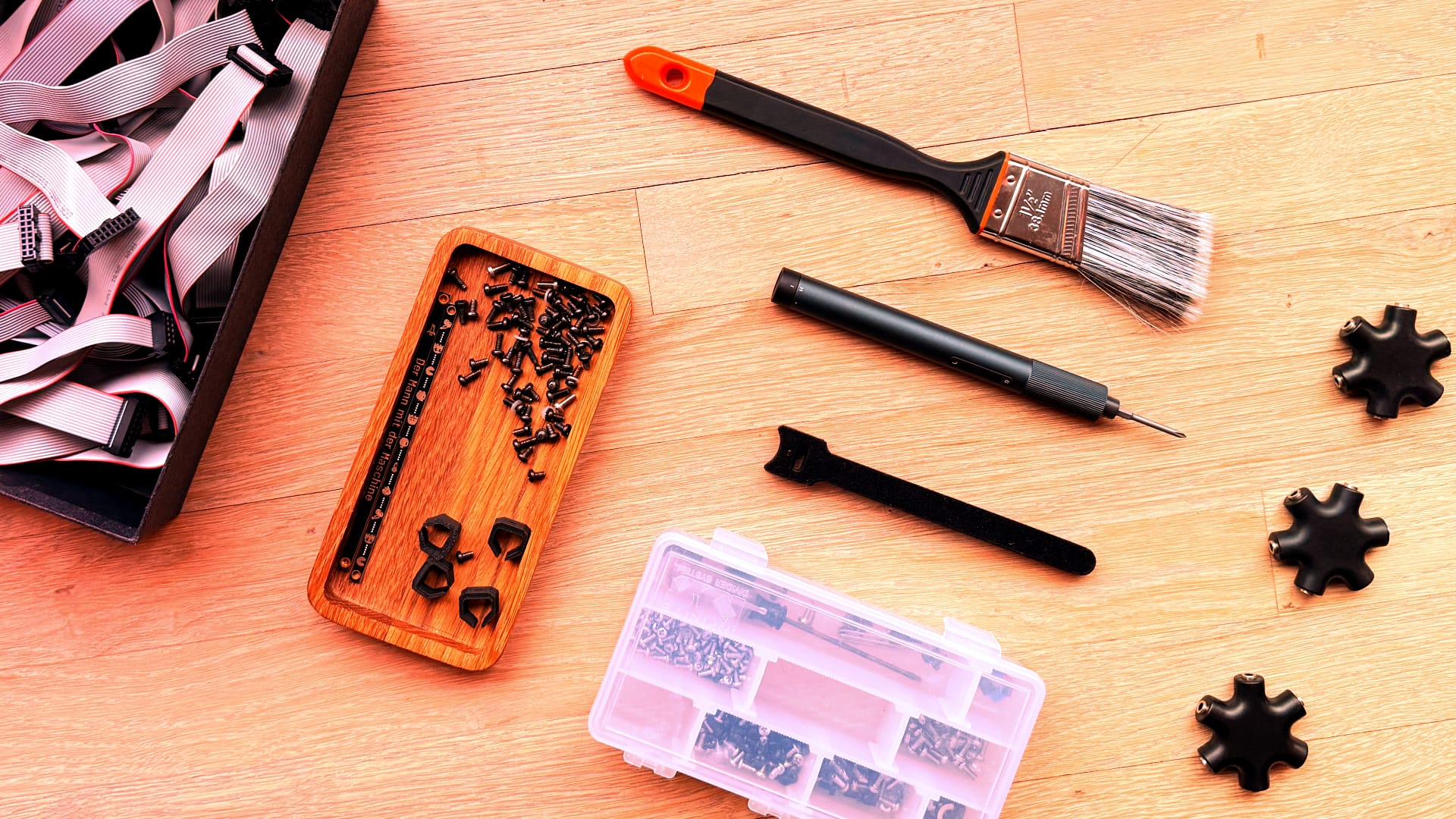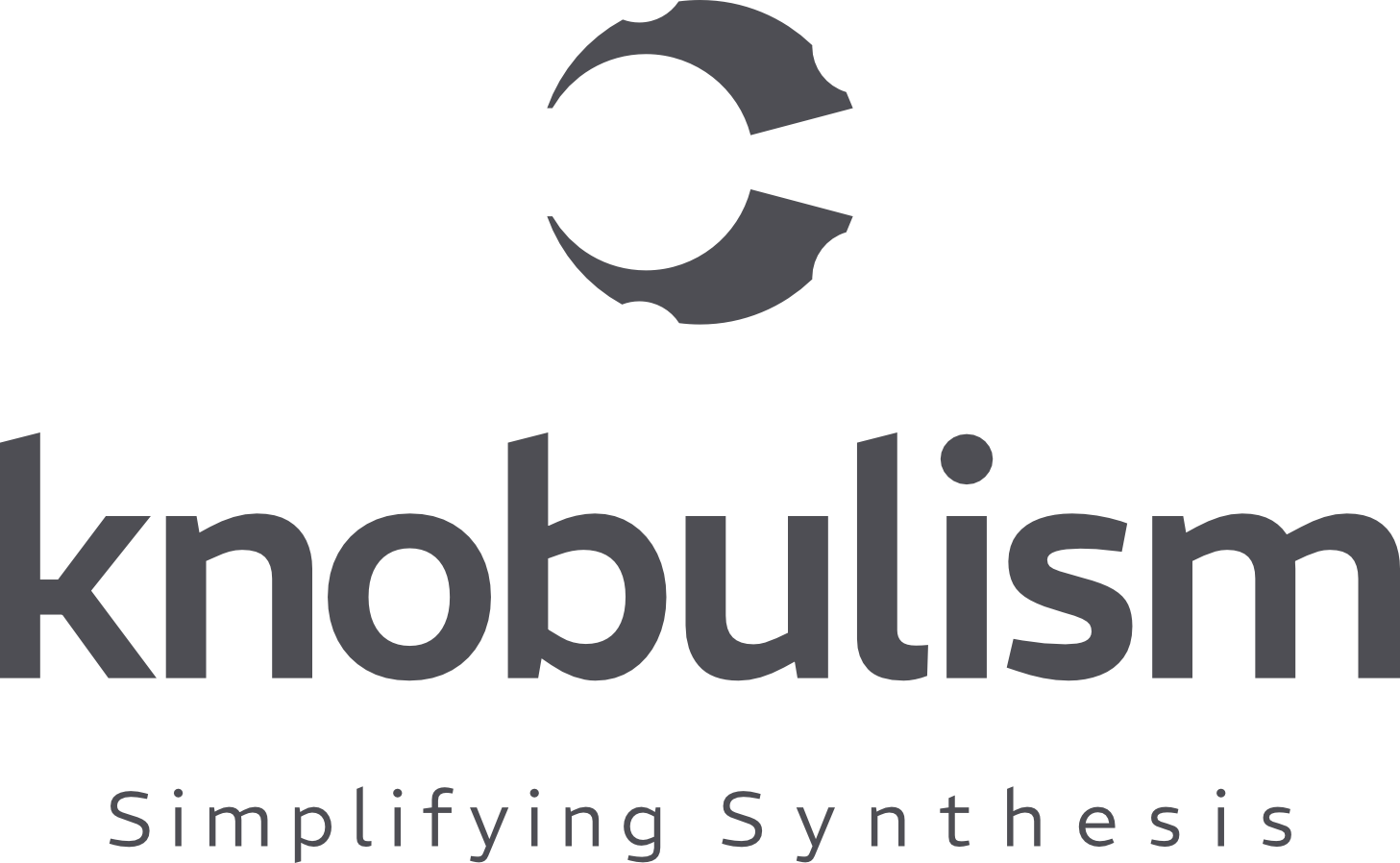Sequencers are great for laying down rhythms and melodies because they’re designed to do exactly that. Oh, but that’s a trap we can fall into, my friends! When everything is locked into a predictable grid, it’s easy to get stuck in familiar patterns. If you’re looking to break free from that and create something outside of your norm, maybe try leaving the sequencer behind and build your sequences from the ground up.
We’ll explore how to use LFOs, switches, logic and clock dividers to craft evolving, unpredictable rhythms and melodies. This is about moving beyond pre-programmed steps and discovering new sounds in real-time.
Why Ditch the Sequencer?
So we can get fucking weird! That is why. Using a sequencer can sometimes feel like painting by numbers. You plug in your steps, set your pitch values, and follow the same routine. But if you’re looking for that sound that truly surprises you, getting out of your head and letting go of familiar habits might lead you somewhere unexpected.
Sequencing without a sequencer can free you from the grid and allow you to play with time in a way that feels more organic. Instead of rigidly repeating the same patterns, you’re creating something that evolves. You can escape the loop and get into a flow where the music constantly changes and grows.
This approach also encourages you to engage with your modules differently. You may find yourself exploring aspects of your gear that you haven’t touched before, simply because the sequencer did the heavy lifting. In other words, it’ll make you rethink how your patches work, and the results can be unpredictable and exciting, so perfect if you’re after something truly unique.
Ready to break the grid?
At the heart of many sequences is a clock. Many sequencers have internal clocks that you can set to a desired BPM, while others rely on an external clock. Typically, dedicated clock modules like Pamela’s Pro Workout, the 4MS Quad Clock Distributor, or Make Noise Tempi would handle the timing for you. But here, we’ll use utility modules like clock dividers, switches, logic, and LFOs to create the rhythm instead. This approach is super flexible and offers a ton of options that you won’t find anywhere else.
What Is a Clock, Really?
To get straight to the point, a clock is just a repeating pulse. Each pulse is typically spaced evenly, like a square wave cycling at a fixed frequency. Yes, it really is that simple. Sorry if I just shattered the mystique, there’s no magical pixie conductor inside your sequencer keeping time. It’s just a square wave, with a rate control that adjusts its frequency.
But clocks can get more interesting. Some clocks can be modulated to go faster or slower, and others can even skip pulses entirely.
Hold up. Wait… what’s this now?
Many sequencers, especially digital ones, need a steady clock because they measure the space between each pulse to calculate the BPM. Send these sequencers an unstable clock, and they won’t be able to lock onto a tempo, which can lead to erratic behavior (and not in a good way). On the other hand, some sequencers move forward one step for every pulse they receive, triggered by the rising edge of the pulse. If both the rising and falling edges triggered a step, you’d get two steps per pulse. That’s why you’ll hear people say the sequencer “steps on the rising edge.” If your clock speeds up, slows down, or skips steps, a sequencer stepping on the rising edge will follow along with all those odd timings perfectly.
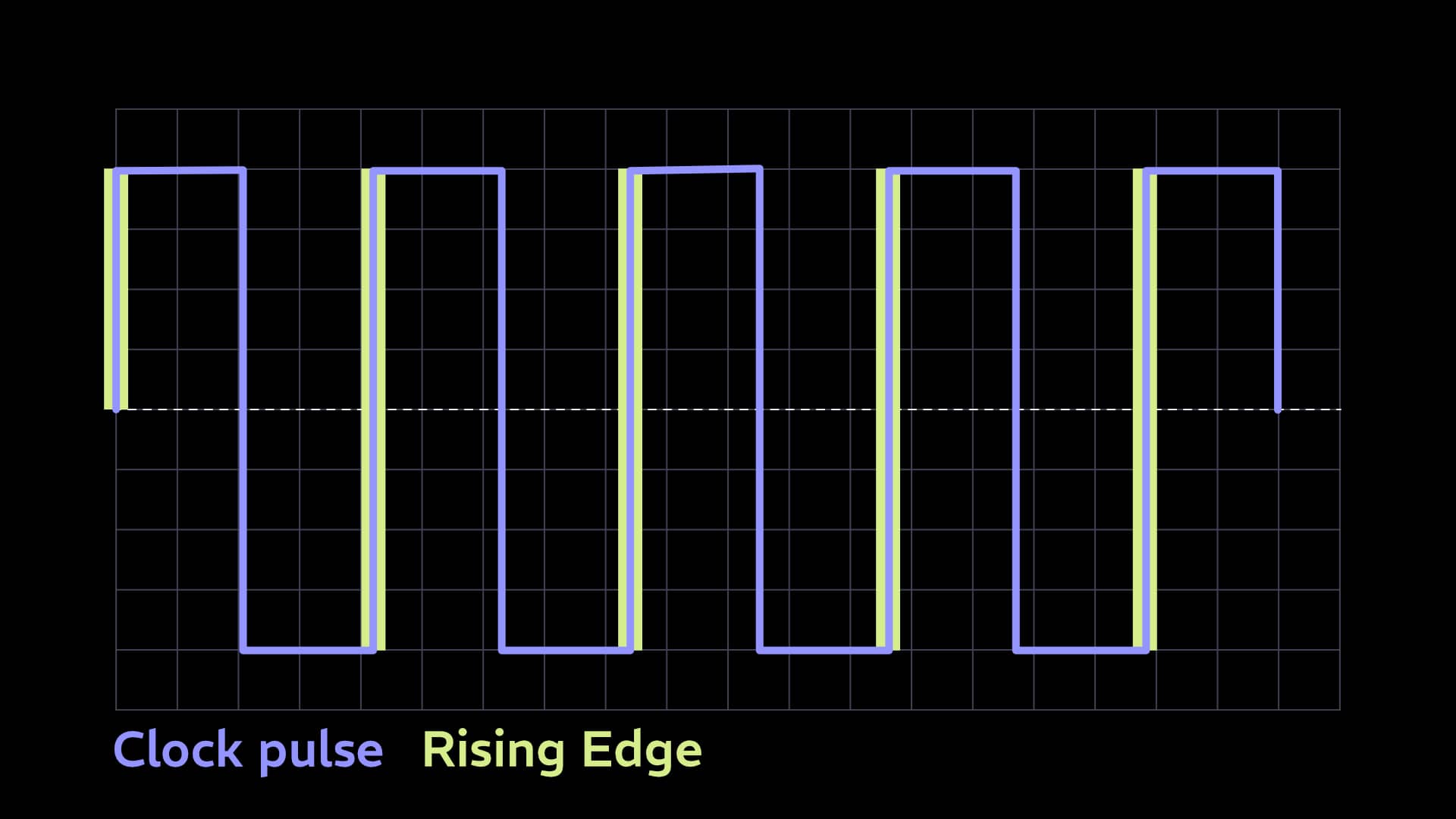
Just a sec! We’re trying to sequence without sequencers, right?
Using Logic to Add Interest to a Clock
Let’s say you’ve got a steady clock striking a low-pass gate (LPG) fed with a harmonically rich waveform. The result? A never-ending stream of evenly spaced bonks.
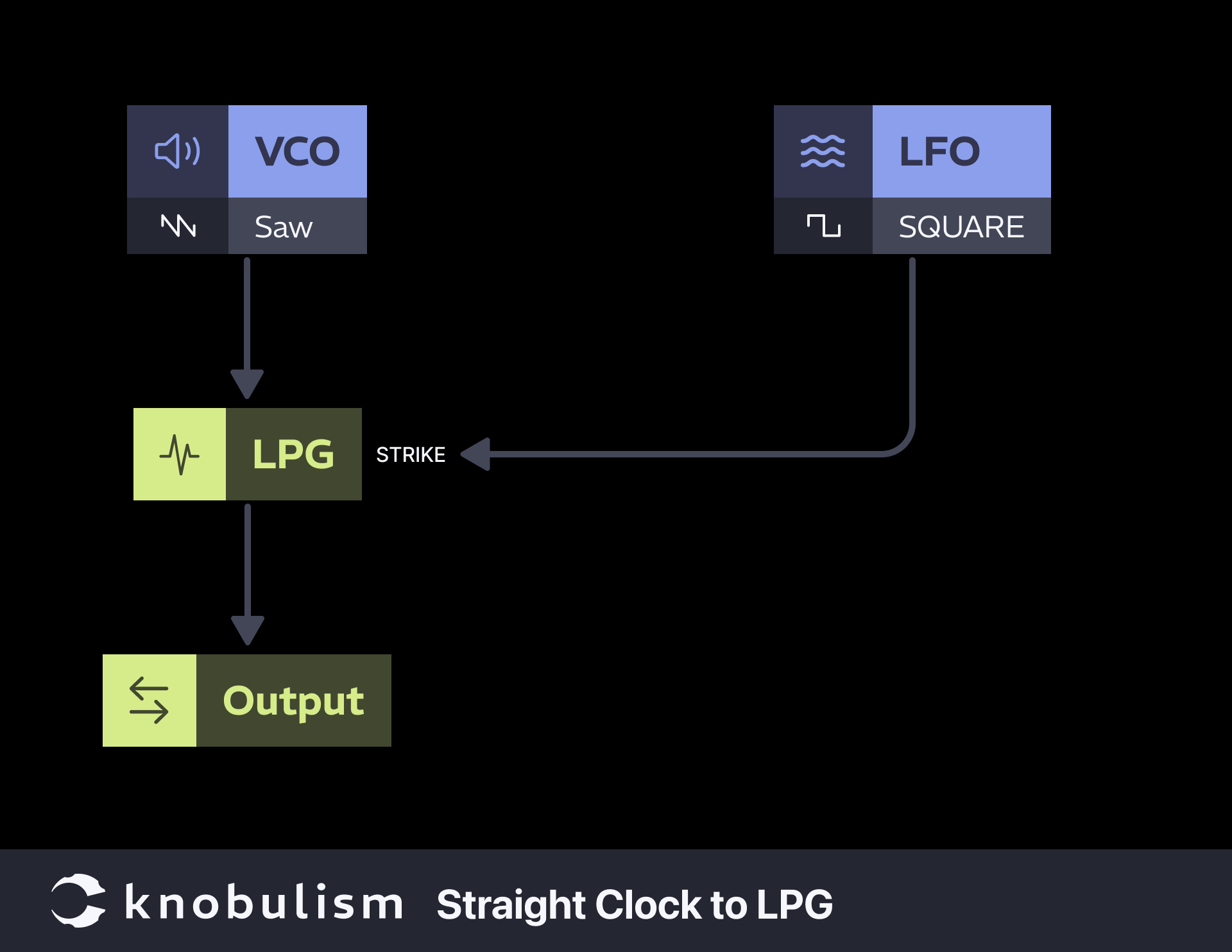
It’s cool at first, but that repetition will wear you down fast. To break things up, let’s bring in a second clock, or rather, the output of a clock divider, and use an AND logic gate to mix things up. If you don’t have a logic module, no worries: a simple VCA will get the job done too. (If you want to dig into why that works, check out my earlier post: Logic Modules Aren’t Only for Vulcans).
Alright, let’s get patching!
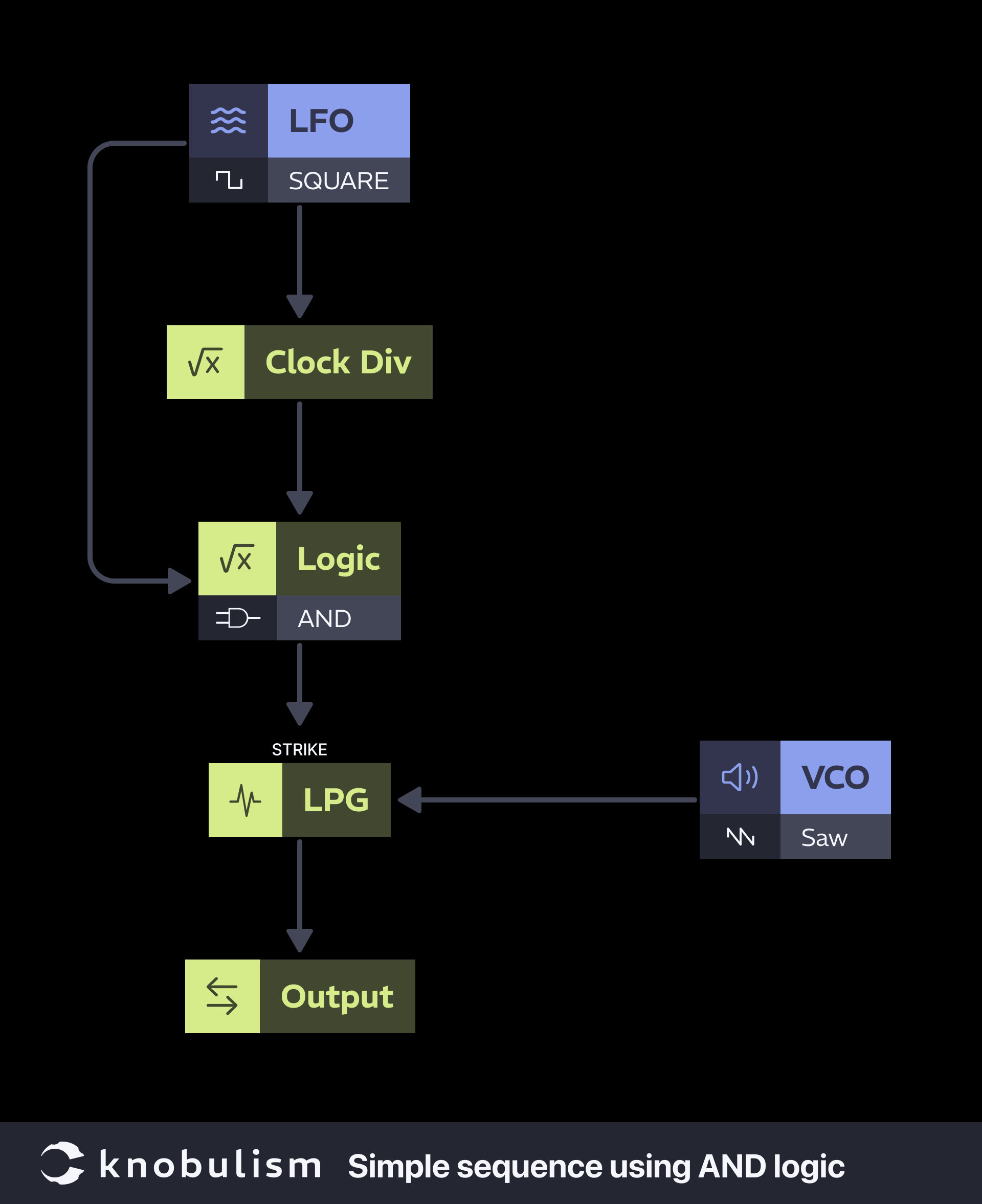
Cool! Now that we’ve built some rhythms, try experimenting with different divisions and logic types for added variation. You may notice, however, that the rhythms are still perfectly in sync and “on the grid.” Let’s address that with the next few patches.
Adding Some Funk with a Comparator
Generally a LFO has more than one output and we can put that to use. Choose an output from the main clock LFO that is not the square but instead a slope. Using a comparator it is possible to set a threshold along that slope which when crossed will generate a gate. In other words a comparator will allow us to push the timing of the clocks gate forward to create some swing. This is illustrated in the chart below.
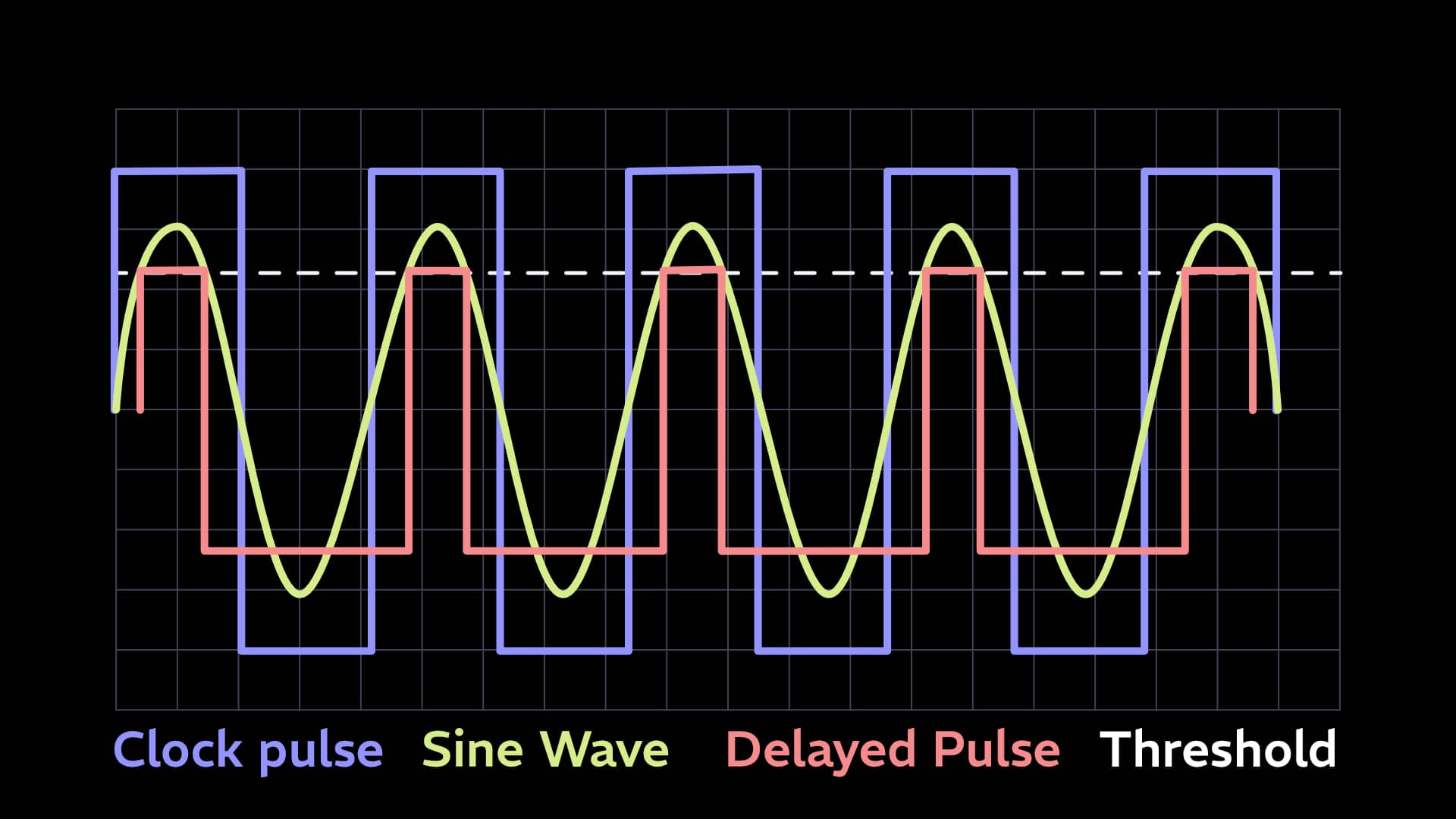
Let’s patch it up and play around with the threshold to determine the amount of swing you want to add.
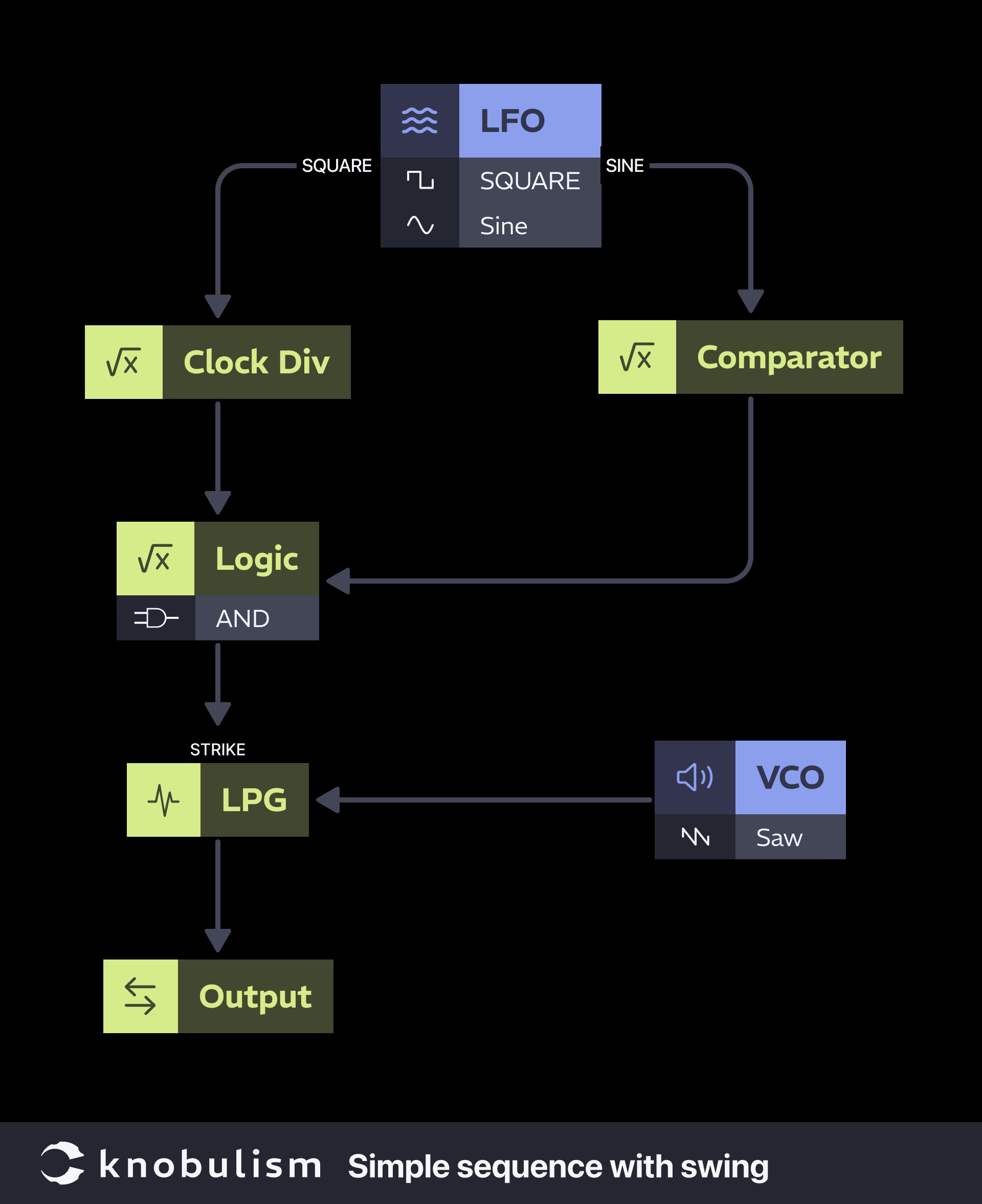
Using Modulation to destabilize to a Clock
Let’s build on the last patch and mess with our clock’s speed. I grew up with cassettes, and one thing that always fascinated me was the random sway in tempo you’d hear when a tape was warped or the player wasn’t running smoothly. It made the recording feel stretchy and flexible, giving it a pleasant looseness that broke away from rigid timing. In this patch, we’ll use a smoothed random signal to gently nudge the clock speed, recreating that subtle, organic shift.
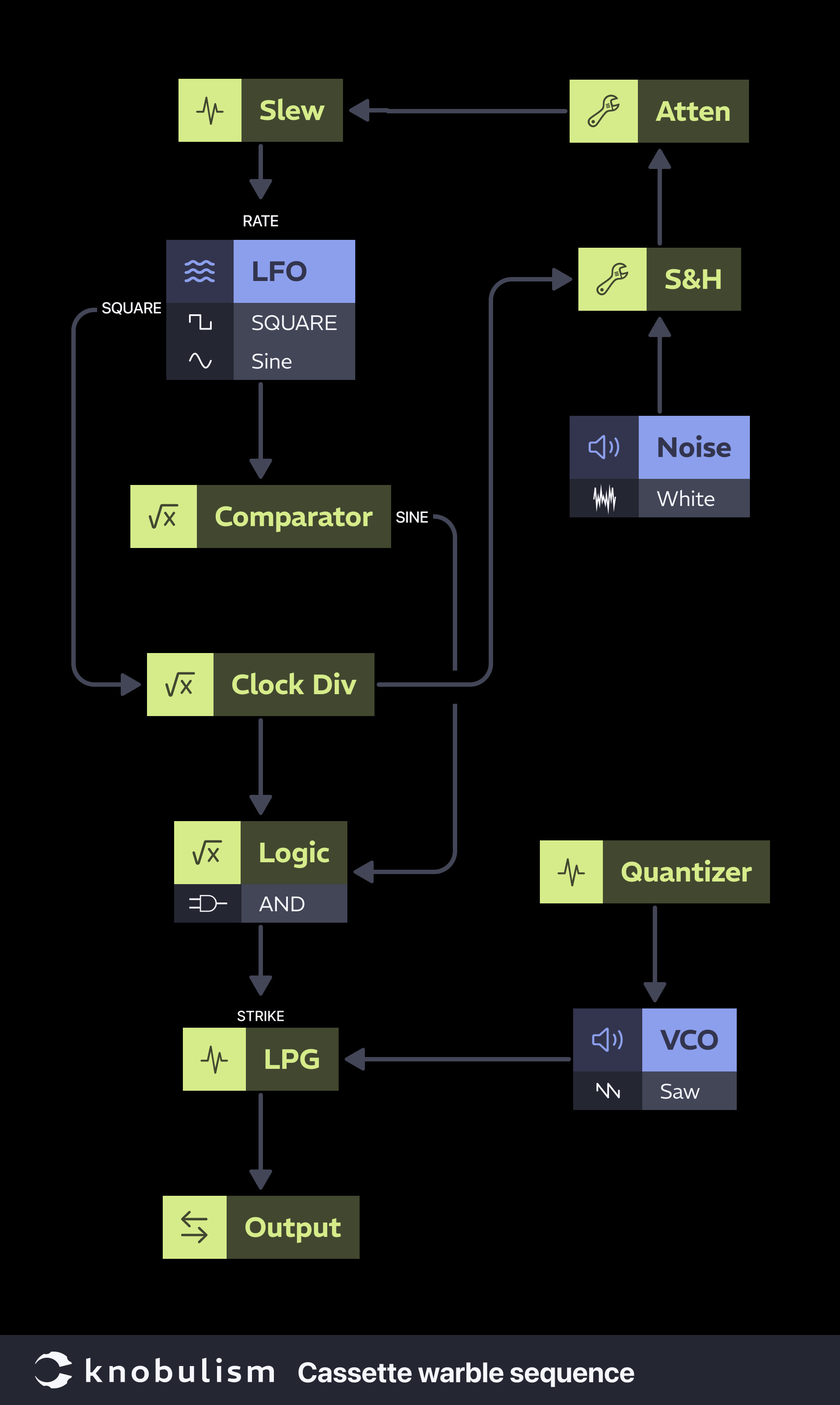
I think you’re ready to dive into some experimentation. Try using different clock divisions, LFO speeds, and modulation to see what patterns you can come up with. Once you’ve got something interesting, share it in the comments, I’d love to hear what you’re working on.
Now that we’ve covered the basics of rhythmic sequencing, let’s move on to some frequency-related patches.
Pitch Sequencing: Free-Flowing or Quantized?
Neither! Both! A combo? There’s no right or wrong answer when it comes to quantizing pitch—it all depends on the sound you’re after. Skipping quantization might lead you to some truly unique, unheard melodies. But with adventure comes some risk, and there’s nothing wrong with sticking to the safer, well-traveled path. For this patch I’ll stick to quantized, but feel free to leave it out.
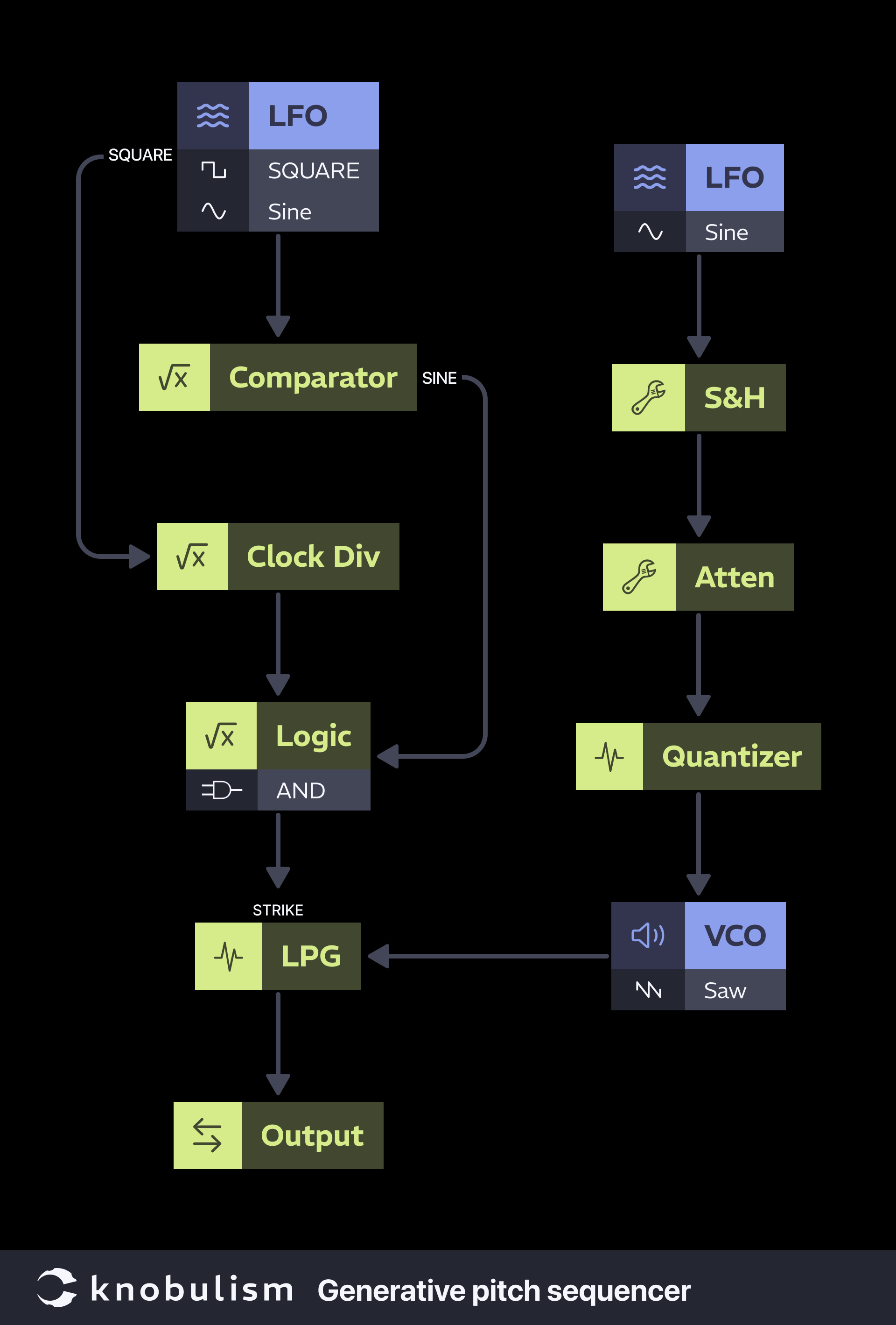
Recommended Modules for Sequencing Without a Sequencer
Here are a few modules that work particularly well for this approach:
- 4MS Quad Clock Distributor: a clock module that generates four independent clock signals, each with adjustable divisions or multiplications, allowing for complex and varied rhythms in a modular synth system.
- Doepfer A-148 Dual S&H: a utility module that features two independent sample and hold circuits, allowing you to sample and retain random or modulated voltages, making it useful for generating stepped modulation or controlling random events in a modular patch.
- NANO Modules VCV Random: a compact module that generates random voltages, offering both stepped and smooth outputs for modulation, ideal for adding unpredictability to patches.
- Joranalogue Compare 2: a dual window comparator module that detects whether input signals fall within or outside defined voltage windows, allowing for precise modulation control, rhythmic gating, and logic-based patching in a modular system.-
- Klavis Two Bits: a versatile dual logic and switch module that offers sequential switching, logical operations, and complex gate processing, making it ideal for creative rhythm and modulation manipulation in modular systems.
- ADDAC207 Intuitive Quantizer: a versatile quantizer module designed for real-time pitch quantization. It allows users to easily select notes and scales with visual feedback, offering smooth control over pitch sequences, perfect for melodic modulation in a modular setup.-
Practical Tips and Insights
- Use Attenuators: If your patch starts to get too wild, using an attenuator will give you more control over how much modulation you want to apply.
- Multiples: Send clocks and signals to multiple destinations sharing rhythm or pitch to keep sounds synced.
- Mix CV Sources: Combining different control voltages (clock, random, LFO) can lead to unexpected but rewarding results, keeping your sequences dynamic and evolving.
This is a primer, not a definitive guide for building your own sequencers. There are still plenty of utilities to explore, like switches, shift registers, and logic modules, each opening up new possibilities for sequencing. With so many combinations available, the potential for creativity is limitless. The patches we’ve covered are just the starting point—feel free to tweak, modify, or expand them to suit your own style.
I’d love to see what you come up with! Share your patches or ideas in the comments below, and let’s keep pushing boundaries together. Stay tuned for more creative ideas and patches in the next article!




